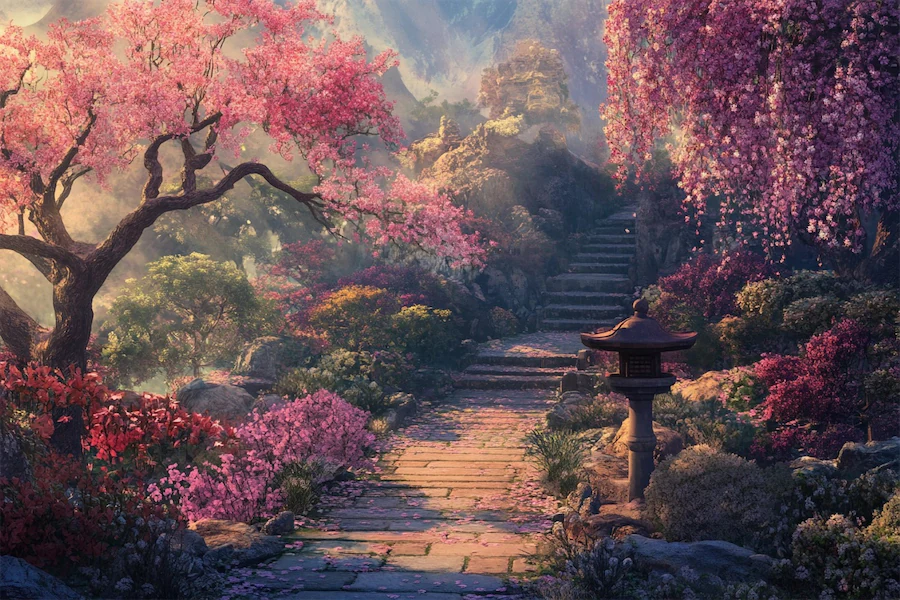A Japanese Tea Garden, or “Roji,” is a meticulously designed outdoor space intended to enhance the experience of the traditional Japanese tea ceremony, known as “chanoyu.” These gardens emphasize simplicity, natural beauty, and tranquility, providing a serene environment for contemplation and the appreciation of nature.
History and Origins of Japanese Tea Gardens
The concept of the Japanese Tea Garden originated during the 16th century in Japan, evolving from the Zen Buddhist philosophy that emphasizes simplicity and mindfulness. These gardens were designed to prepare guests for the tea ceremony, guiding them through a journey that fosters a sense of calm and detachment from the outside world. The pathway, or “roji,” often features stepping stones, lanterns, and a purification basin, leading to the teahouse where the ceremony takes place.
Key Features of Japanese Tea Gardens
- Stepping Stone Paths (Tobi-ishi): Carefully placed stones guide visitors through the garden, encouraging mindful walking and a connection with nature.
- Stone Lanterns (Ishidoro): These lanterns provide subtle lighting and serve as aesthetic focal points, symbolizing enlightenment.
- Purification Basin (Tsukubai): A stone basin filled with water allows guests to cleanse their hands and mouths, a ritual purification before entering the teahouse.
- Teahouse (Chashitsu): A simple, rustic structure where the tea ceremony is conducted, designed to evoke humility and simplicity.
- Natural Plantings: The garden features native plants, moss, and minimal floral displays, emphasizing subdued colors and textures to create a tranquil atmosphere.
Applications of Japanese Tea Gardens
- Cultural Preservation: Japanese Tea Gardens serve as living museums, preserving the art of the tea ceremony and traditional garden design.
- Public Spaces: Many cities worldwide have established Japanese Tea Gardens, such as the Japanese Tea Garden in San Francisco’s Golden Gate Park, providing residents and visitors with a place for reflection and cultural appreciation.
- Private Residences: Homeowners incorporate tea garden elements to create personal retreats that promote relaxation and mindfulness.
Considerations When Creating a Japanese Tea Garden
- Authenticity: Understanding the cultural and historical significance of each element ensures the garden maintains its intended purpose and aesthetic.
- Maintenance: Regular care is required to preserve the garden’s simplicity and natural beauty, including pruning, moss cultivation, and stone cleaning.
- Space Utilization: Even small areas can be transformed into tea gardens by thoughtfully arranging elements to create a sense of depth and tranquility.
Conclusion
Japanese Tea Gardens offer a harmonious blend of nature, culture, and spirituality. By thoughtfully integrating traditional elements, these gardens provide a peaceful sanctuary that fosters mindfulness and a deep appreciation for the subtle beauty of the natural world.
